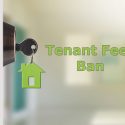New energy efficiency rules for rental properties in England and Wales come into force on Monday, April 1, 2019. They spell out the costs that landlords legally face in improving properties that have an EPC rating below E.
The Statutory Instrument to bring them in was made super-quietly earlier this month on March 15.
It will have gone under the radar for many agents and landlords with most of the industry focused on the legal requirement coming into force next Monday for lettings agents to have Client Money Protection insurance, ahead of the fees ban.
However, the Energy Efficiency (Private Rented Property) (England and Wales) (Amendment) Regulations 2019 do put important new responsibilities on landlords as from next week.
A spokesperson for one energy firm, Vibrant, which carries out EPCs, said: “These are important changes and will have a big financial impact on landlords.”
The new Regulations focus on the minimum level of energy efficiency – band E – required to let domestic property, amending 2015 rules.
The requirement has been in force for a year, on a new or renewed tenancy agreement.
An amendment made on March 15 introduces a new “self-funding” element for domestic landlords which takes effect if landlords are unable to access third party funding to improve any rental properties with F or G ratings.
This spend element is capped at £3,500 including VAT per property. In other words, a landlord without funding must spend up to this amount “sufficient” to improve the property to a minimum E rating.
A landlord with third-party funding may have the full costs covered; if there is no funding, the £3,500 maximum goes on both purchasing and installation.
The third possibility is that the landlord tops up third-party funding to a total cost of £3,500 maximum.
The landlord can choose to make any improvements they wish, including those made in an EPC report, “so long as they are confident that the measure(s) will improve their sub-standard property to a minimum of EPC E”.
If the landlord chooses to make improvements which are not “relevant energy efficiency improvements”, and the property is still below an E rating, then the landlords will have to make further improvements.
A landlord who has made all the “relevant energy efficiency improvements” but the property is still below E, will be able to apply for an exemption.
Possible third-party funding sources are: a Green Deal finance plan; local authorities; or an Energy Company Obligation.
From April 1 next year the minimum E rating will also be a legal requirement for properties that have been let since before last April.
New government guidance says: “Landlords are encouraged to take action as soon as possible to ensure that their properties reach EPC E by the deadline of April 1, 2020.”
The guidance also gives examples of how landlords can “pick and mix” energy improvements.
For example, recommended measures might be to improve loft insulation, and install floor insulation, low energy lighting, internal or external wall insulation, and solar panels. This would cost over £15,000. But the landlord is only required to choose those measures which together come to under the cap.
Local authorities have been tasked with enforcing the minimum E rating requirement, which only applies to private rental housing, not the social housing sector.
There are certain exemptions in the private rented sector – for example, there is currently no legal requirement to obtain an EPC for a individual bedsit within a House in Multiple Occupation.
The guidance is complicated and runs to 114 pages:
domestic-private-rented-property-minimum-standard-guidance-landlords-las
Source: Property Industry Eye



